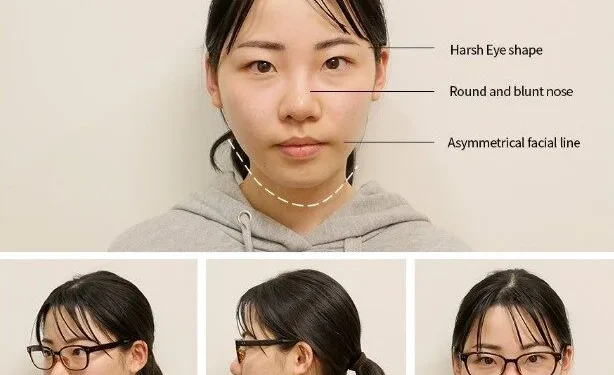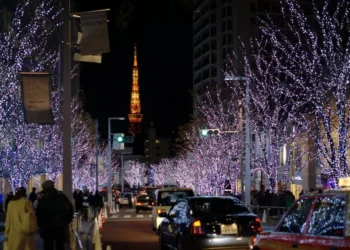No products in the cart.
Plastic Surgery in Japan: How It Compares to Korea’s Beauty Culture
Plastic surgery in Japan has quietly grown in popularity over the years, but it still lags behind South Korea, where going under the knife is almost seen as a coming-of-age ritual. In Korea, plastic surgery is so normalized that it’s not uncommon for high school graduates to receive procedures like double eyelid surgery as a gift from their parents. But in Japan, things are a little more reserved, with cultural norms, beauty ideals, and privacy shaping a very different approach.
A Quiet Yet Growing Industry
While Japan may not be as vocal about it as its neighbor, plastic surgery in Japan is a thriving industry. According to the International Society of Aesthetic Plastic Surgery, Japan consistently ranks in the top 5 countries for the number of procedures performed each year. The focus is often on natural-looking results, and many people prefer non-invasive procedures such as fillers, Botox, and laser treatments.
Unlike Korea, where entire neighborhoods like Gangnam are filled with surgery clinics and billboards, plastic surgery in Japan is more discreet. Clinics often operate in quiet office buildings, and advertisements are subtle. This reflects the Japanese cultural preference for humility and avoiding attention.
The Role of Beauty Standards
Plastic surgery in Japan is influenced by different beauty ideals than in Korea. While Korean beauty culture tends to favor features like pale skin, big eyes, and a small V-shaped jaw, Japanese aesthetics often focus on softer, more “kawaii” (cute) looks. The goal is not to stand out too much but to blend in while enhancing one’s features subtly.
That said, double eyelid surgery, rhinoplasty (nose jobs), and jawline slimming are still common choices in both countries. But whereas these procedures are worn like a badge of pride in South Korea, they’re more private matters in Japan. People rarely talk about having surgery, and it’s often kept secret from even close friends.

Is Plastic Surgery in Japan a Gift Too?
Unlike in Korea, where plastic surgery can be a graduation gift, this is not a common tradition in Japan. Japanese parents tend to focus more on education, jobs, or experiences as graduation gifts. That being said, attitudes are slowly shifting. Some younger generations, especially those influenced by Korean pop culture and social media, are beginning to see plastic surgery as a valid form of self-care or self-expression.
Still, it would be rare to hear of Japanese high schoolers getting eyelid surgery from their parents as a reward for good grades. It’s more likely that people wait until adulthood, saving money and making decisions independently. The social stigma is stronger, so people are cautious.
Gender and Plastic Surgery
In both Korea and Japan, women make up the majority of plastic surgery patients, but men are slowly catching up. In Japan, male beauty influencers and celebrities have helped normalize cosmetic enhancements for men. Procedures like skin whitening, nose reshaping, and even lip fillers are becoming more accepted among men in urban areas like Tokyo and Osaka.
In South Korea, this trend is even more developed, with male idols openly promoting skincare and surgery. Japan is following, but at a slower pace.
The Influence of Media and Social Trends
Social media, streaming platforms, and pop culture have played a big role in shaping views on plastic surgery in Japan. The rise of K-pop and K-dramas has exposed Japanese audiences to Korea’s beauty ideals, which are often linked to surgical enhancements. Some young people in Japan now travel to Korea to get procedures done, seeking lower prices and the prestige of Korean clinics.
However, Japan’s own media industry still maintains a more conservative stance. You don’t see as many celebrities openly discussing surgery, and when they do, it’s often framed as medical rather than cosmetic. The idea of “natural beauty” still holds power in Japan.
Costs and Accessibility
Plastic surgery in Japan is not cheap, and it’s rarely covered by health insurance unless it’s for medical reasons. This limits access for many people, especially the younger generation. Clinics in Japan also don’t compete on price as aggressively as in Korea, where the high demand drives competition and deals.
Traveling to Korea for surgery has become an option for some Japanese citizens. Korean clinics often have Japanese-speaking staff and advertise directly to Japanese customers. Still, many prefer the safety and familiarity of getting work done at home, even if it costs more.
The Privacy Factor
One of the biggest differences between plastic surgery in Japan and Korea is how openly it’s discussed. In Korea, having surgery is normalized and even celebrated. It’s not uncommon for people to share before-and-after photos or talk openly about their procedures. In contrast, plastic surgery in Japan is treated with discretion. People are afraid of being judged or seen as “fake.”
This doesn’t mean the desire for change is any less. It just means that people go about it more quietly. Many choose procedures that are hard to detect, like skin treatments or subtle reshaping. The goal is to enhance appearance without drawing attention to the fact that anything was done.
The Future of Plastic Surgery in Japan
Plastic surgery in Japan is slowly becoming more accepted, especially among younger people who are influenced by Korean trends and global beauty standards. As social media continues to shape how people view themselves and others, it’s likely that the demand for cosmetic procedures will keep rising.
However, Japan’s approach will probably remain unique—focused on privacy, subtle results, and cultural sensitivity. While it may never reach the level of openness seen in Korea, plastic surgery in Japan will continue to grow, driven by evolving attitudes and a strong desire for personal transformation.
Conclusion
Plastic surgery in Japan is a complex topic shaped by cultural norms, beauty standards, and social values. While not as mainstream as in South Korea, it’s a growing industry with unique characteristics. The lifestyle in Japan values discretion and natural beauty, which reflects in the kind of procedures people choose and how they talk about them. As more Japanese people are exposed to Korean trends and global media, plastic surgery in Japan will likely become even more common—but always in its own way.










